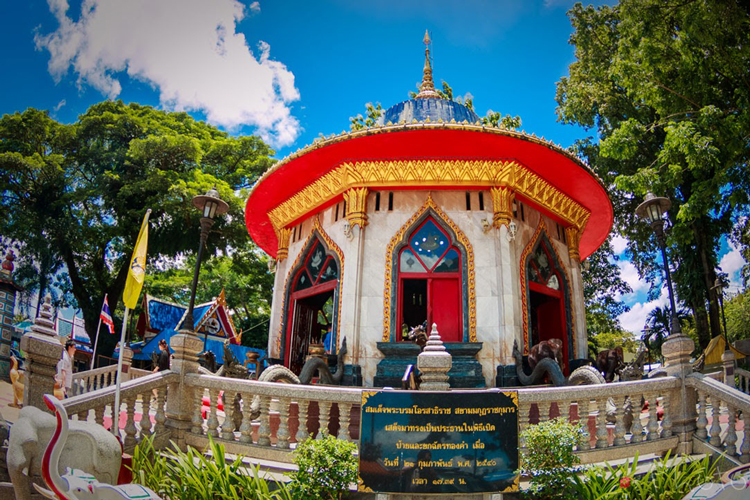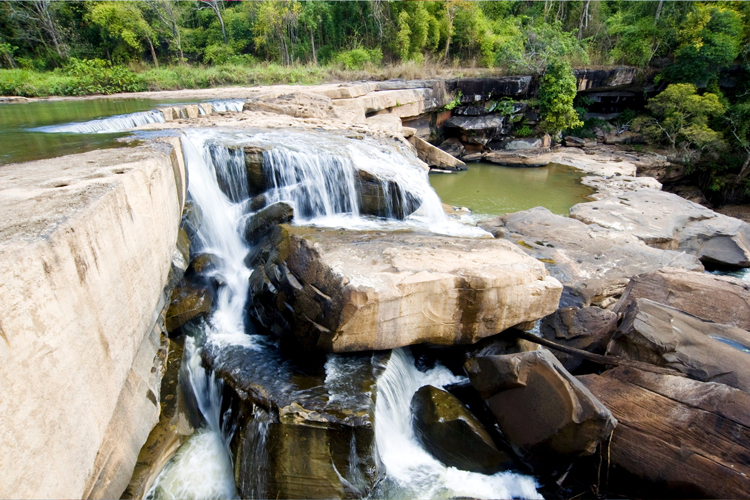Nakhon Sawan

Situated in Thailand's lower north, Nakhon Sawan features a varied topography that includes plains, mountains, and the meandering Chao Phraya River. The province's economy is based mostly on agriculture, especially rice farming, although it also has manufacturing and food processing sectors. Natural beauties and historical sites are the main sources of tourism in Nakhon Sawan. Travel to Thailand's northern, northeastern, and central areas is made easier by the province's advantageous location at the intersection of many main highways, making it an essential hub for transit. Nakhon Sawan is a historical city rich in history, with many temples and historical landmarks serving as reminders of the city's rich cultural legacy. Festivals highlight the rich customs of the area, such as the exciting yearly boat races on the Chao Phraya River. The population represents the many ethnic groups and cultures that make up Thailand as a whole, and the local food showcases a fusion of tastes that are exclusive to Nakhon Sawan. Let's explore Nakhon Sawan with Asia King Travel!

Sawan Park, Nakhon Sawan
The rich history of Nakhon Sawan is entwined with Thailand's larger historical arc. The region has been inhabited since antiquity, and numerous cultural and architectural artifacts attest to its historical significance.
The province was formerly a component of two significant historical nations in Thailand: the Sukhothai Kingdom and the Ayutthaya Kingdom. During ancient times, the Chao Phraya River, which passes through Nakhon Sawan, was important for trade and transportation.
The area saw the construction of temples and other significant buildings during the Ayutthaya period. Because of its geographic location, Nakhon Sawan has served as a hub linking various parts of Thailand for generations.
The region underwent more growth in the 1800s during the rule of Chakri Dynasty Kings Rama IV and Rama V. The goal of this era's modernization initiatives was to enhance administrative and infrastructural systems.
The birthplace of King Taksin the Great (1734–1782), a respected king in Thai history who was instrumental in the establishment of the Thonburi Kingdom and the reunification of Thailand following the collapse of Ayutthaya, lends historical significance to Nakhon Sawan.
Nakhon Sawan kept changing over the 20th century, and as road networks got better, so did its significance as a transportation center.
Despite not having the same level of worldwide recognition as some other historical sites in Thailand, Nakhon Sawan's history is an essential component of the country's
Nakhon Sawan's past is an essential element of the country's narrative and adds to the cultural and historical mosaic that distinguishes the area, even if it may not be as well-known abroad as some other historical places in Thailand. Nakhon Sawan offers a wealth of historical landmarks, temples, and shrines for visitors to explore.

The shrine features traditional Thai architecture
Nakhon Sawan, located in central Thailand, experiences a tropical climate with distinct wet and dry seasons.
Dry Season (November to April): The dry season typically spans from November to April. During this period, Nakhon Sawan experiences lower humidity and minimal rainfall. The temperatures can be relatively high, with daytime temperatures often exceeding 30 degrees Celsius.
Hot Season (March to May): The hottest period is generally from March to May. Temperatures during these months can soar, with daytime temperatures often exceeding 35 degrees Celsius.
Wet Season (May to October): The wet season begins around May and lasts until October. This period is characterized by higher humidity and regular rainfall, with the peak of the monsoon typically occurring from June to September. Rainfall is heaviest during these months, and occasional heavy downpours can lead to flooding in certain areas.
Cool Season (November to February): The cool season, from November to February, brings relief from the heat and marks the onset of more comfortable temperatures. Daytime temperatures during this season are milder, ranging from the low 20s to the mid-30s degrees Celsius.
It's commonly said that November through February, during the cold season, is the ideal time to visit Nakhon Sawan. The region's natural and cultural beauties may be appreciated, as well as outdoor attractions, thanks to the typically pleasant weather. It's important to keep in mind that the wet season may present better possibilities for birding in the Bueng Boraphet area owing to increased bird activity.
2-3 Days: a stay of 2 to 3 days may be sufficient if you're primarily interested in exploring the cultural and historical sites of Nakhon Sawan, such as shrines, temples, and parks
3-4 Days: If your goal is to have a more relaxed and leisurely experience, taking time to enjoy the local cuisine, relax in parks, and immerse yourself in the local atmosphere
A two- to four-day visit is a good amount of time to spend touring Nakhon Sawan. This enables you to take your time enjoying the historical, cultural, and scenic sites. The precise length, however, might change depending on personal tastes and the things you want to fit into your schedule.

Kaeng Sopha Waterfall is situated in the lush and scenic natural surroundings
Motorcycle Taxis: Motorcycle taxis are a quick and flexible way to navigate through traffic in Nakhon Sawan. Riders can be found at various street corners and can take you to specific destinations.
Rental Cars: Renting a car provides flexibility and convenience, allowing you to explore Nakhon Sawan and its surroundings at your own pace. Rental services are available both in the city and at major transportation hubs.
Bicycles: Some areas of Nakhon Sawan are bike-friendly, and you may find bicycle rental services. Biking can be a pleasant way to explore parks and scenic spots.
Local Buses: Nakhon Sawan has a local bus system that connects different parts of the city. Local buses are an affordable option for traveling within the city limits.
Songthaews: Songthaews operate on fixed routes and are a common mode of transportation for both short and medium distances.
Private Taxis: Private taxi services are available in Nakhon Sawan and can be hired for specific trips or for a full day of sightseeing. They offer a more comfortable and private travel experience.
Walking: Many attractions in Nakhon Sawan, especially in the city center, are within walking distance of each other. Walking allows you to explore at a leisurely pace and take in the local atmosphere
Buses: Bus services connect Nakhon Sawan with various neighboring provinces. Both government-operated buses and private bus companies offer routes to destinations such as Kamphaeng Phet, Sukhothai, Phitsanulok, and others.
Trains: Nakhon Sawan is connected to the Thai railway network, and train services operate to neighboring provinces. Trains offer a comfortable and scenic way to travel to destinations like Phitsanulok, Uttaradit, and beyond.
Private Cars: Renting a car or hiring a private taxi allows for flexibility in exploring neighboring provinces. This option is ideal for those who prefer personalized itineraries and direct transportation to specific destinations.
Songthaews and Taxis: often operate between neighboring provinces. They are cost-effective but may have fixed routes and schedules.
Motorcycles and Scooters: Renting a motorcycle or scooter provides flexibility for short-distance travel between provinces. However, this option is suitable for experienced riders comfortable with local traffic conditions.
Combination of Transportation Modes: Depending on the destination, you might use a combination of transportation modes. For example, take a bus or train to a nearby province and then use local transportation options for further exploration